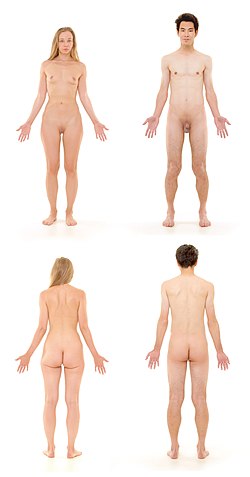Human physical appearance is the outward phenotype or look of human beings.
Contents
- Aspects
- Natural differences in body appearance
- Short-term physiological changes
- Clothing, personal effects, and intentional body modifications
- Other functional objects, temporarily attached to the body
- See also
- References

There are functionally infinite variations in human phenotypes, though society reduces the variability to distinct categories. The physical appearance of humans, in particular those attributes which are regarded as important for physical attractiveness, are believed by anthropologists to affect the development of personality significantly and social relations. Many humans are acutely sensitive to their physical appearance. [1] Some differences in human appearance are genetic, others are the result of age, lifestyle or disease, and many are the result of personal adornment.
Perception of the human body is not only based on the visual look, but also on other sensory inputs, including voice and scent.
Some people have linked some differences with ethnicity, such as skeletal shape, prognathism or elongated stride. Different cultures place different degrees of emphasis on physical appearance and its importance to social status and other phenomena.